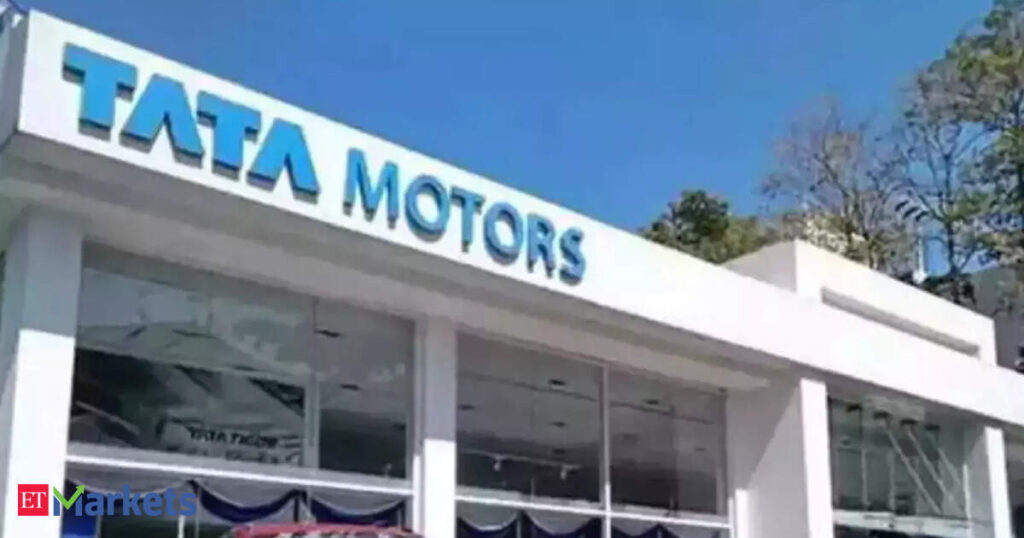“The affirmation reflects the sustained strengthening in TML’s consolidated credit profile driven by gross debt reduction and earnings expansion, which are accelerating deleveraging even as the global automotive industry faces challenging conditions,” says Kaustubh Chaubal, a Moody’s
Ratings Senior Vice President.
“Concurrently, we have upgraded JLR’s backed senior unsecured instrument ratings to Ba1 from Ba2. The outlook remains positive,” a company filing said, quoting the rating agency.
According to Moody’s Ratings, Tata Motors Ba1 Corporate Family Rating (CFR) is a reflection of several key credit strengths. The rating agency highlights TML’s robust global presence in the luxury automotive segment through its wholly-owned subsidiary, Jaguar Land Rover Automotive Plc (JLR, Ba1 positive). Moody’s also points to TML’s leading market position in India across commercial vehicles (CVs) and its growing share in passenger vehicles (PVs).
Furthermore, Moody’s credits TML’s commitment to creditor-friendly financial policies that effectively balance growth with financial discipline, thus supporting a solid credit profile. The rating agency also acknowledges a long-standing, strategically important relationship with its parent, Tata Sons. This relationship, according to Moody’s, results in a one-notch uplift to TML’s rating due to the expectation of extraordinary support, should it be required.
Moody’s also notes that TML is currently in the process of demerging its CV operations into a separately listed entity with mirror shareholding. Post-demerger, which Moody’s expects to be effective in October, the rated entity will encompass all PV and PV-related businesses, including 100% ownership of JLR. The rating agency anticipates that following this transaction, JLR will contribute over 90% of TML’s consolidated EBITDA, underscoring the increasing convergence of their credit fundamentals.
10 key takeaways according to Moody’s:
1. US Tariff Exposure for JLR: While TML’s India operations are largely unaffected, JLR remains exposed to US automotive import tariffs, as the US accounted for about 30% of its global vehicle sales in FY24-25. This risk could impact JLR’s sales, profitability, and free cash flow in FY25-26.
2. TML India operations outlook: The outlook for TML’s India operations remains positive, driven by rising per capita income, a growing working-age population, and robust replacement demand.
3. India PV volume growth: TML’s Passenger Vehicle (PV) operations in India are expected to achieve mid-single-digit volume growth in FY25-26, supported by new models, branding focus, and customer satisfaction.
4. Post-Demerger financial projections: The surviving entity after the demerger (TML’s PV business, including JLR and India PV operations) is projected to generate a Moody’s adjusted EBIT margin of 4%-5% over the next two fiscal years.
5. Continued deleveraging trajectory: TML’s debt/EBITDA is expected to continue its deleveraging trend, reaching around 2.0x by March 2027, with free cash flow remaining positive despite ongoing investments.
6. Strengthening credit profile and investment grade trajectory: Overall, TML’s credit profile continues to strengthen, with key financial metrics aligning with expectations and reinforcing its path towards an investment-grade rating.
7. Operating company status maintained: Despite the demerger, TML will preserve its status as an operating company by merging the PV subsidiary into TML, preventing it from becoming a pure holding company.
8. Mitigated structural subordination risk: The expectation of extraordinary support from Tata Sons, the group’s apex holding company with a strong track record of support, mitigates structural subordination risk for TML.
9. Liquidity position: TML maintains very good liquidity, with approximately $8.0 billion in consolidated cash and equivalents as of March 2025. This, along with forecasted operating cash flows, comfortably covers its obligations, and JLR’s liquidity is further bolstered by an undrawn £1.7 billion revolving credit facility.
10) New launches: The upcoming launch of the Range Rover Electric later this year and the first all-electric Jaguar model in 2026 are critical
milestones toward JLR’s goal of full electrification by 2030.
Risk
JLR’s BEV Transition Challenge: JLR faces a significant challenge in its transition to Battery Electric Vehicles (BEVs), with only 2% BEV penetration in FY24-25, among the lowest in its peer group. The successful launch of the Range Rover Electric (late 2025) and the first all-electric Jaguar (2026) are critical for its 2030 electrification goal.
(Disclaimer: Recommendations, suggestions, views and opinions given by the experts are their own. These do not represent the views of Economic Times)
Source:https://economictimes.indiatimes.com/markets/stocks/news/moodys-affirms-ba1-rating-on-tata-motors-upgrades-view-on-jlr-10-reasons-why/articleshow/121834101.cms


